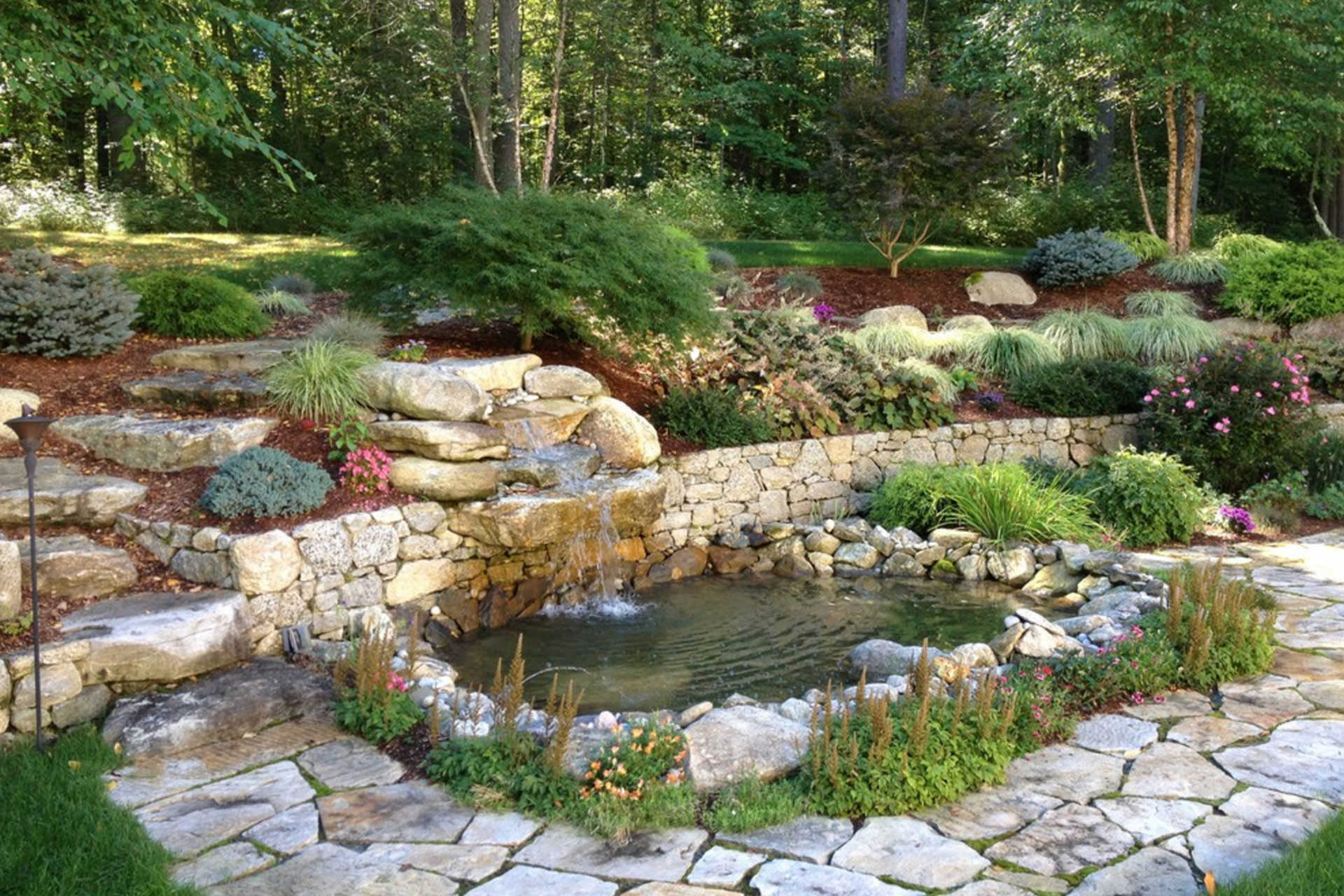Hardscaping Design: How to Give your Outdoor Space Contrast and Form
For most homeowners, the first stages of an outdoor renovation project are devoted entirely to laying out a landscaped paradise. However, the potential of an outdoor space can be maximized if a little more consideration is afforded to creating a complimentary hardscaping design. Despite being a rather unfamiliar term, especially in comparison to its verbal counterpart, hardscaping design can play a significant and transformative role in creating a beautifully functional outdoor space.
Like most renovation projects, it is easiest when the initial plans incorporate the homeowners entire feasible wish list. If possible, be sure to include all hardscaping design into the preliminary stages of your overall plan, this will give you a greater scope of the overall project and allow you to follow the basic rules of hardscaping with greater ease. However, before you get down and dirty, it would probably be best if I explained what hardscaping design actually is.
What is Hardscaping Design?
Structure
Essentially, hardscaping design is a practical art form that uses ‘hard’ components, such as walkways, walls and structures, to create an outdoor area that flows and ebbs around specific features of the space. Hardscaping design compliments landscaping features, flattering the natural greens while functioning as a usable walkway. Imagine a brick walkway leading you forward along a pristine green wall, speckled with bright flowers, toward comfortable lounge chairs and a brick fire pit, your own personal retreat. The possibilities are endless, the only limitations are your own imagination.
A Practical Addition to an Outdoor Space
Aside from creating a serene outdoor environment, hardscaping design is pragmatic in function. Brick or paved walkaways provide a safe and stable passage around outdoor spaces, this can be enhanced further be installing an appropriate lighting system to keep the path safe at night. Retaining walls, bold and striking as a feature, actually serve to transform slopes or hillsides into usable spaces, creating valuable square footage in an otherwise ‘dead’ space. Hardscaping design also incorporates outdoor structures such as sheds, fountains and pergolas. Depending on how you wish to utilize your space, pergolas may be the most adaptable to various functions. Either freestanding or attached, pergolas are usually affixed with a retractable canopy, neither rain nor shine can ruin a day outside, allowing you to entertain or relax regardless of the weather.
The Basics of Hardscape Design
Hardscaping design has unlimited potential, but in order to get the most from it, there are some things to keep in mind. Below are some basic considerations to abide by when incorporating hardscaping design into your outdoor renovation project plan, ensuring a relatively smooth project.
Draining

This is not the most exciting aspect of hardscaping design, but one of the most important. Naturally, building something like a retaining wall or fire pit will alter the flow of water in and around your outdoor space. Keep this in mind when developing your plans, especially in relation to your landscaping features, it would be a bit odd to have a vegetable garden without any vegetables.
Balance

Balance is necessary to complementing the chosen features and overall flow of your outdoor space. This does not necessarily mean that the square footage of your outdoor area should be divided evenly between landscaping and hardscaping designs, but you must ensure that the elements you choose work well together. Keep in mind colours, textures, growing seasons and climate when trying to compliment hardscaping design with landscaping features.
Focal Point

The focal point is your piece de resistance, this is the area of space that both your hardscaping design and landscaping features serve to compliment and lead towards. The focal point may be a pond, a pergola, a fire pit or simply a comfortable seating area. Use a combination of walkways, retaining walls, plants and trees, to truly tie the entire outdoor space together.
Materials

Hardscaping design works best when the materials chosen are indigenous to the local area. Be sure to compliment the surrounding environment so that your outdoor space feels ‘naturalized’ and native. This will also help to ensure the longevity of your hardscaping design, the natural material will be acclimatized and able to withstand the weather conditions.
What ideas and design schemes have you come up with during your own forays into hardscaping? Let us know in the comment section below.
Retractable Solutions for Outdoor Spaces
Please complete the form below to download our free eBrochure.
Price List included



